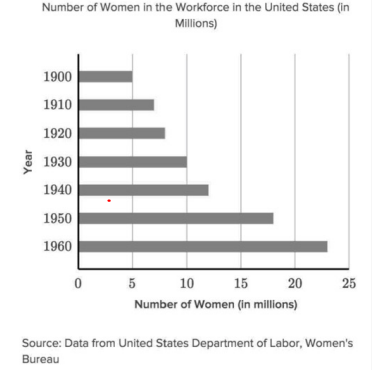Hi SAT Aspirants, welcome to AKVTutorials. As you know SAT (Scholastic Assessment Test) is a standard test, used for taking admission to undergraduate programs of universities or colleges of United States. SAT is developed and published by the College Board, an organization in United States, administered by the Educational Testing Service. Therefore, you need to do practice on SAT Reading Section, SAT Writing and Language Section. In this article, you will get SAT Writing Practice Test 63 with Answer Keys AMBIPi
Instruction:
- In the passage below is accompanied by a number of questions.
- For some questions, you need to think how the passage might be revised to improve the expression of ideas.
- For other questions, you will consider how the passage might be edited to correct errors in sentence structure, usage, or punctuation.
- Some questions will direct you to an underlined portion of a passage.
- Other questions will direct you to a location in a passage or ask you to think about the passage as a whole.
SAT Writing & Language Section Passage
SAT Writing Practice Test Title: A “Rosie” Turn on American Labor
In order to inspire patriotism and meet the country’s economic needs during 1 World War II was why the United States government launched a massive, targeted propaganda campaign. It worked with advertising agencies to create images specifically aimed at women to get them to fill industrial jobs recently vacated by men. These efforts led to the creation of one of the most famous and enduring icons in American history—an icon who 2 would have an incalculable influence on American labor and society.
The propaganda posters featured images of a coverall clad, muscular woman named Rosie the Riveter. Dirty yet wearing makeup, brawny yet feminine, 3 female factory workers were symbolized by Rosie. She represented women’s wartime work and sacrifice in an exaggerated form for inspiration. 4 Posters and literature stressed the idea that if women became “Rosies” and worked, the war would end sooner.
5 Women broke traditional gender roles to earn money and make their families proud. They began working on railroads and streetcars, as engineers and technicians, and in steel mills and lumber yards. By 1943, an additional six million women had entered the workforce. Not only did more women work as new business sectors opened to them, but the composition of the female workforce changed. Before the war, working women were primarily young and single. Middle-aged, married women joined 6 them during the war, almost one out of every four gained employment outside the home. By 1944, 62 percent of the female workforce was 35 and older, and 46 percent of all working women were wedded.
7 Rosie appeared as a white woman on posters. Changes ushered in by the campaign added significant opportunities for African American women as well. Rather than continuing to work domestic jobs for $3.50 a week, they began laboring in industrial plants for $48 a week.
By 1945, the number of African American women working for the federal government had more than tripled, and the percentage working in the defense industry was equal to 8 it’s proportion of the general population.
As a result of their entry into careers from which they were previously excluded, women exercised a newfound social and economic independence. They enjoyed having an income of their own and living on their own for the first time. 9 Comparatively, they refused to shrink back into the domestic sphere; 80 percent who worked outside the home wished to continue doing so by the war’s end. Women continued to push for 10 expanded job opportunities, entry into professional roles, and greater access to higher education. As the graph suggests, Rosie’s influence persisted even after the war. 11 To this day, Rosie continues to influence women as a symbol of feminism in popular culture.

SAT Writing Practice Test Questions
Question No 1
Which choice best maintains the sentence pattern already established in the paragraph?
Option A : No Change
Option B : World War II so the
Option C : World War II; the
Option D : World War II, the
SAT Writing Practice Test 63 with Answer Keys
Show/Hide Answer
Option D : World War II, the
Question No 2
Which of the following options is the most effective?
Option A : No Change
Option B : will have
Option C : is to have
Option D : would have had
Answer
Show/Hide Answer
Option A : No Change
Question No 3
Which choice provides the most effectively transition to the information that follows?
Option A : No Change
Option B : Rosie became a symbol of the American female factory worker
Option C : a symbol of the American female factory worker was developed in Rosie.
Option D : a symbol of the American female factory worker was developed in Rosie.
Answer
Show/Hide Answer
Option B : Rosie became a symbol of the American female factory worker
Question No 4
At this point, the writer is considering adding the following sentence. Propaganda also featured women doing their part by conserving food items, planting household gardens, and buying war bonds. Should the writer make this addition here?
Option A : Yes, because it is a strong example of what the US government hoped to gain through its propaganda campaign.
Option B : Yes, because it illustrates women’s wartime sacrifice with three examples of what they did to help the war effort.
Option C : No, because it does not explain how women’s activities would help end the war sooner.
Option D : No, because it introduces information that interrupts the paragraph’s discussion of the Rosie campaign.
Answer
Show/Hide Answer
Option D : No, because it introduces information that interrupts the paragraph’s discussion of the Rosie campaign.
Question No 5
Which choice most effectively establishes the main topic of the paragraph?
Option A : No Change
Option B : Women seized opportunities to perform jobs in what had traditionally been considered “male” industries.
Option C : The Rosie campaign did not account for the fact that many women were unable or unwilling to take jobs outside the home.
Option D : The Rosie propaganda campaign gave women the opportunity to be married and work.
Answer
Show/Hide Answer
Option B : Women seized opportunities to perform jobs in what had traditionally been considered “male” industries.
Question No 6
Which choice best maintains the sentence pattern already established in the paragraph?
Option A : No Change
Option B : them; during the war—
Option C : them during the war;
Option D : them, during the war:
Answer
Show/Hide Answer
Option C : them during the war;
Question No 7
Which choice most effectively combines the underlined sentences?
Option A : Although Rosie appeared as a white woman on added significant opportunities for African American women as well.
Option B : Changes ushered in by the campaign added significant opportunities for African American women as well, while Rosie appeared as a white woman on posters.
Option C : Rosie appeared as a white woman on posters, and changes ushered in by the campaign added significant opportunities for African American women as well.
Option D : Changes ushered in by the campaign added significant opportunities for African American women as well, with Rosie appearing as a white woman on posters.
Answer
Show/Hide Answer
Option A : Although Rosie appeared as a white woman on added significant opportunities for African American women as well.
Question No 8
The writer is considering deleting the underlined sentence. Should the sentence be kept or deleted?
Option A : NO CHANGE
Option B : their
Option C : her
Option D : one’s
Answer
Show/Hide Answer
Option B : their
Question No 9
Which choice best maintains the sentence pattern already established in the paragraph?
Option A : No Change
Option B : However,
Option C : Consequently,
Option D : Regardless,
Answer
Show/Hide Answer
Option C : Consequently,
Question No 10
Which choice best maintains the sentence pattern already established in the paragraph?
Option A : No Change
Option B : inflated
Option C : amplified
Option D : prolonged
Answer
Show/Hide Answer
Option A : No Change
Question No 11
Which choice accurately incorporates data from the graph and supports the main claim of the passage?
Option A : Changes aligned with the Rosie campaign led to the number of women in the workforce nearly doubling from 1940 to 1960.
Option B : In the years before the Rosie campaign, the number of women in the workforce was rising slowly.
Option C : In the years after the Rosie campaign, the number of women in the workforce did not return to prewar levels.
Option D : When the Rosie campaign began, there were roughly twelve million women in the workforce.
SAT Writing Practice Test 63 with Answer Keys
Show/Hide Answer
Option A : Changes aligned with the Rosie campaign led to the number of women in the workforce nearly doubling from 1940 to 1960.



